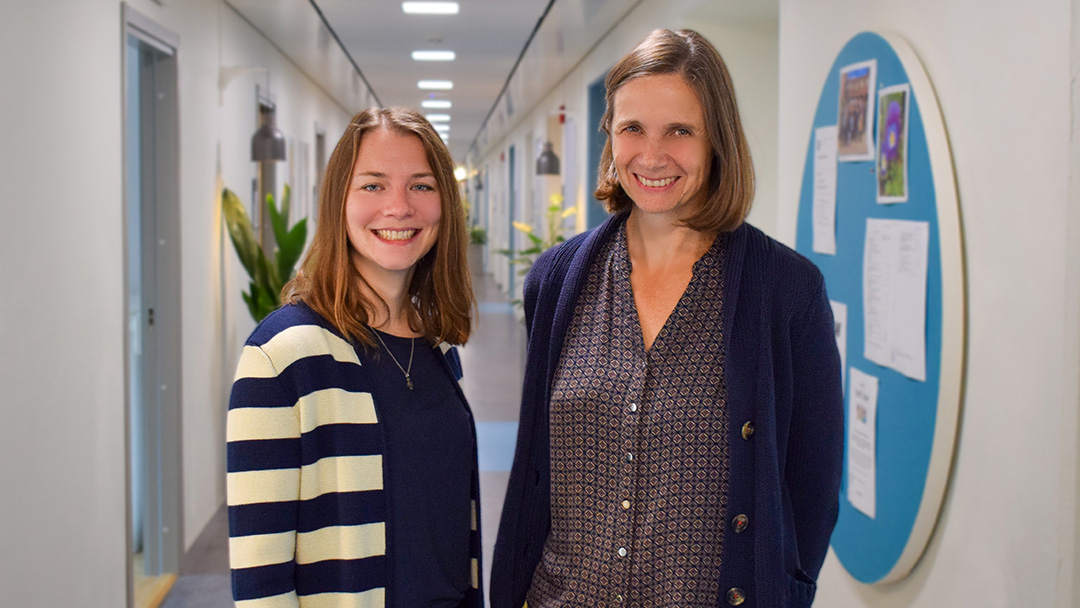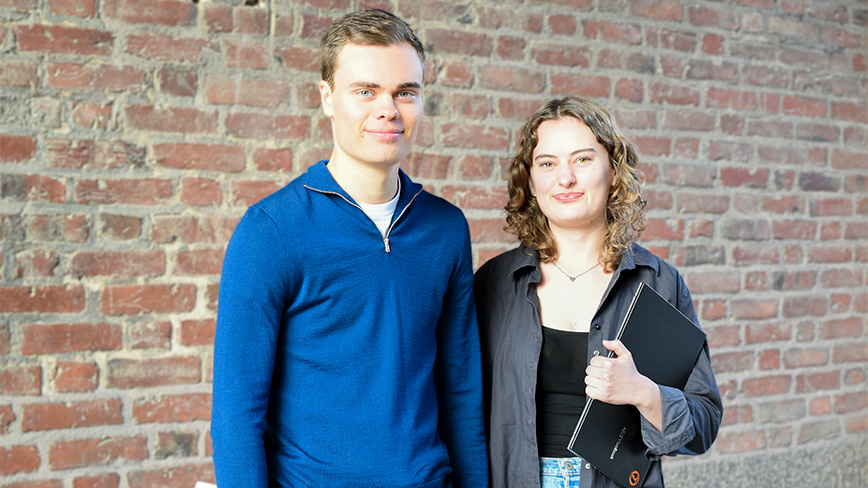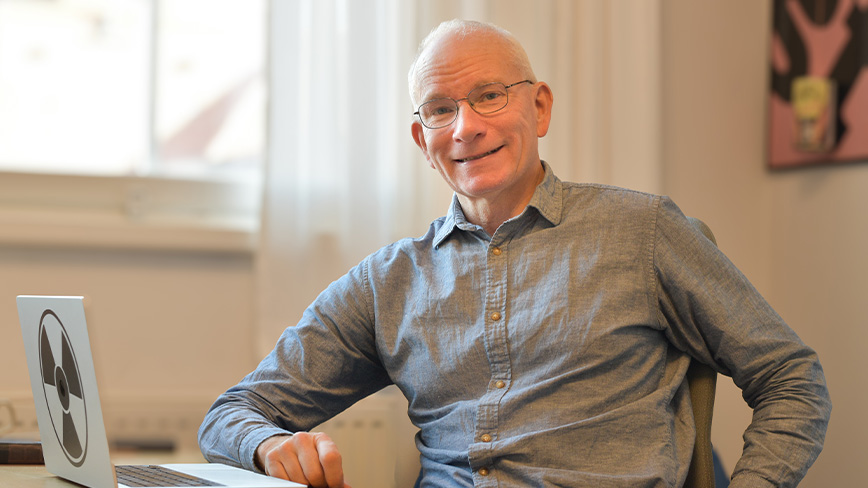28 ideas that will attract new students
Student recruitment

A new initiative with 28 ready-to-go ideas for high school projects aims to evoke interest in technical studies. Prospective students are encouraged to write about social robots, brain function, data analysis and cyber security.
Viktoria Fodor and a group of doctoral students are the brains behind the new initiative. She is responsible for national student recruitment at EECS. Together with the communication unit and the programme directors, the job includes updating the programme information and coordinating the administration around the admission.
“Most importantly, I plan how the school should contribute to the high and elementary school outreach activities. This is primarily done centrally at KTH, but our goal is to have activities where our programs are in focus”, says Viktoria.
28 ready-to-go ideas for high school projects
In Sweden, each high school student must do an independent project and find the topic and background material themselves. The new recruitment activity 28 ideas for your high school projects speaks for itself. The prospective students are given examples of projects within social robots, brain function, data analysis and cyber security.
The questions are based on research conducted at the School of Electrical Engineering and Computer Science:
- How do we build real-life social robots like R2D2, Wall-E and Baymax?
- How can brain research help us understand diseases like Alzheimer's and design AI?
- How can we use all the data collected to improve our lives?
- How can we feel safe from intrusions in the digital world?
“We share ideas on topics that are closely connected to our programmes but are also related to the high school’s natural science and technology curriculum”, Viktoria continues.
Sarah Gillet is one of the doctoral students involved in forming the ideas for high school projects.
”I participated in computer science summer school for girls before graduating high school. This experience was beneficial as I learned more about what studying computer science could look like; that is what I hope this project can do”, says Sarah.
Later this year, the students will have the opportunity to ask questions about their high school projects to researchers in robotics, neuroscience, data analysis and cyber security. All participants can win a lab tour at KTH.
Meeting presumptive students’ hesitations
Studies on KTH’s presumptive students show that hesitation comes from lacking knowledge of what computer scientists and electrical engineers do really do. Prospective students also hesitates whether they can cope with these kinds of problems and whether they find them interesting.
“I believe this project can help students to overcome all these hesitations. As a bonus, it does not require extra effort from the students. Instead, they get help with what they need to do anyway”, Viktoria says.
Why broader recruitment is essential
For many years KTH worked to attract more female students to our programs. It is now extended to broaden the recruitment, for example, towards students with a non-academic background.
We will need more and more electrical and computer engineers, data scientists and programmers in the future. From our school’s perspective, we would like to increase the number of admitted students to our programs. Therefore, we need to reach more prospective students.
“I believe the university can do more to be available to a broader group of people. There are many underrepresented groups at KTH that our current recruitment activities do not reach or do not convince to apply”, Viktoria says.
”From research, we also know that diverse teams are important, so we need to work to overcome the fear and potential knowledge gaps about our areas of expertise to achieve truly various teams in the future”, Sarah adds.
Activities for student recruitment
A lot of our significant student recruitment activities originated from these kinds of initiatives from small research groups or individuals. Some examples are the TEKLA festival and Fill the Gap, addressing girls of various ages. These activities are organised by KTH now, but EECS was one of the main initiators when they started.
Some of the activities organised locally at EECS are Inspiration days at Kista Mentorspace, where we invite local elementary schools; we also support the brunch for girls and non-binary collected by the Elektrosektionens network of female students, Noblesse.
“Our school has a wide range of activities. I believe we will try to develop these further in the coming years. Later, my dream is to host Open days at KTH, where the labs are open for visitors, and the streets are full of student and research projects demonstrations. Let’s see whether this will come true someday”, Viktoria finishes.
To the 28 ideas for high school projects (Swedish)
Related news

The students' report on Starlink has been downloaded over 7500 times
How is satellite-based internet affected by rain and time of day? KTH students Emil Fredriksson and Céline Careau investigated this in their thesis - and they got it right. Their report has now been d...
Read the article
How to stop cyber-attacks with honeypots
In the ever-evolving landscape of cyber warfare, defending against human-controlled cyberattacks requires innovative strategies. A recent study conducted by students at KTH delves into the realm of cy...
Read the article
New internship course gives students valuable experience
The course has the potential to impact not only the students' future but also KTH's reputation as a leading educational institution in engineering.
Read the article